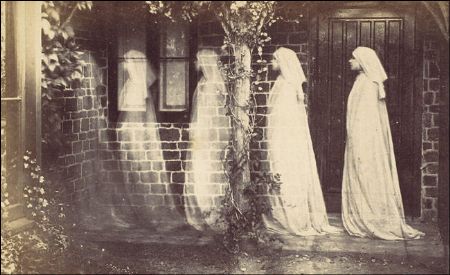Spirit photography is a type of photography whose primary attempt is to capture images of ghosts and other spiritual entities, especially in ghost hunting. It was first used by William H. Mumler in the 1860s.
Mumler discovered the technique by accident, after he discovered a second person in a photograph he took of himself, which he found was actually a double exposure. Seeing there was a market for it, Mumler started working as a medium, taking people’s pictures and doctoring the negatives to add lost loved ones into them (mostly using other photographs as basis). Mumler’s fraud was discovered after he put identifiable living Boston residents in the photos as spirits.

Choosing the right camera
A digital camera is a good way of alerting others as to where the ghostly anomalies are positioned because you can immediately view the photo and see the orbs or ectoplasm. The digital camera should have a built-in flash, exposure/shutter control and at least 5M definition.
However, a lot of people are mistaking digital photos for paranormal anomalies captured in the photo and that may suggest that the digital format may not be as effective as a film camera, but this is not the case.
The most common mistakes are orbs that are the result of capturing airborne dust, pollen, or mositure orbs floating in front of the camera lens and lens flare is still common when inexperience photographers point their camera toward the sun and snap photos.
Guidelines
- Always clean camera lenses. Lint, dust specks, smudges and fingerprints can look like ecto mist, orbs, and other ghostly anomalies.
- Remove camera straps. Many times straps get in the picture and can be mistaken for a vortex, ecto, moving orb and ghosts.
- Look for things in the way like spiderwebs, wire, ropes, tree limbs. They can appear on photos as something paranormal when they are in close range of the camera lens.
- Be aware of the temperature when photographing outdoors or in an unheated building. If it is cold, hold your breath while taking a photo and for several seconds afterward. Remember, if you can see it so can the camera.
- Do not shoot with a flash at or near reflective surfaces. These include mirrors, glass, any shinny headstones.
- Try to avoid shooting toward a bright light, such as the sun, moon, or stark artificial lights. Doing so can produce "lenses flare." Lenses flare is when the light reflects back and forth between the lenses in the camera. The result can look quite a bit like "spirit orbs."
- Thank any ghosts that may have posed for your photos.
